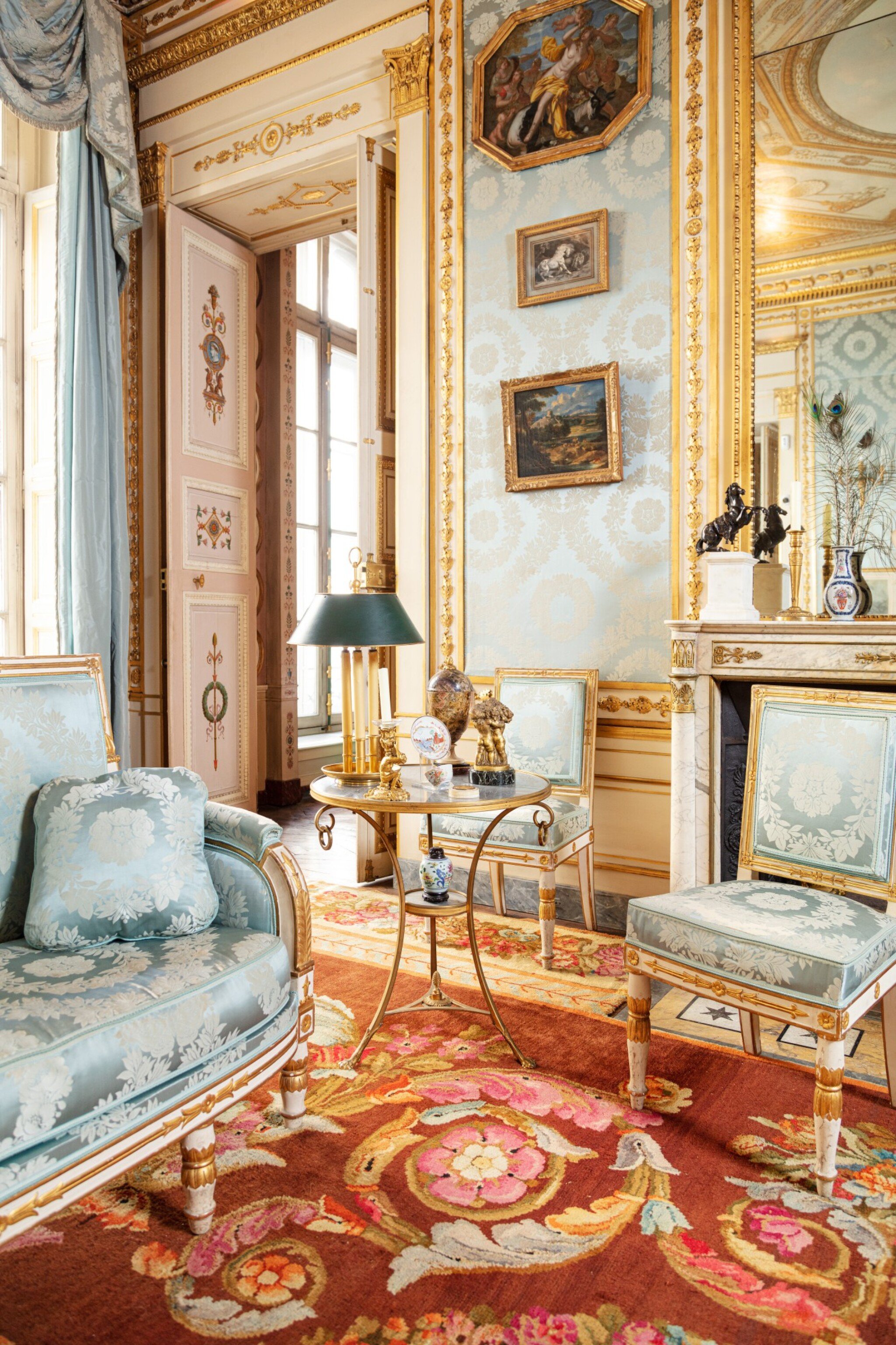the Freedom of Home Decor Without Historical Baggage
Hello again, intrepid interior design enthusiast! I just got my hair cut, working on my 🙏 last and final bedroom revamp and have been enjoying life in general.
Speaking of, I watched “The Choice is Yours” Black Sheep documentary. Besides loving the hip-hop history and behind-the-scenes drama of making a rap album with artists over 50 (go Dre!), there was one segment I found especially interesting and useful for our purposes here.
Dre Titus visits a high school beat and music lab setup by the J Dilla Music Technology Grant. The instructor explains to us/Dre/the camera that the lab was set up to introduce eager young minds to the music industry without the pre-requisite music history lesson one would normally have to trudge through just to get to the good stuff. In other words, instead of forcing enthusiastic students to pay their dues with Mozart first and possibly lose them with inaccessible and possibly boring theory, they are instead thrown into the music they actually love first.
Besides addressing the systemic inequalities inherent with the music business, the results are astounding as the students one-by-one showcased their eloquent, insightful and ambitious creations… all without having to learn the importance of Bach. Often, art seems to favor one history over another and while Bach is super important (I actually do listen to classical music daily), the students’ (predominantly black and latino in this case) cultural music history and language should play an even larger part in their expression.
I have always found the practice of forcing artists to learn the history of their art before even picking up a keyboard/paintbrush/wallpaper sample has been a bit punitive.
This is my hot take — and of course, feel free to disagree — that often instructors and pundits use history to pad and justify their instruction. The journey to becoming a trusted interior design expert is a very linear one. First comes the history, then the understanding, then the implementation. It is assumed that if one is truly dedicated, you will suffer the history as some sort of litmus test.
Certainly I love design and architecture, but really gets me going has nothing to do with that. History is just a tool, take it or leave it, but it should never be the gateway to interior design creativity. Again, my hot take.
Sure you might want to do some studying up if you want your home to look like this:
Or even this:
These rooms are masterfully curated vintage wonderlands. They require devout study and o-so-careful placement.
Okay, History is somewhat important
I am not here to say “Forget history!” No, in fact, I still think history is extremely important when learning a craft. But instead of being a pre-requisite to creativity, I feel like deepening one’s knowledge should or can augment it. When it comes to decorating one’s home, history should always comes after to form and function.
What I recommend to all burgeoning home decorators, professional or novice, is to find what you like and can afford first before plunking down valuable time to learn the origin. I am a firm believer that ALL objects should only be worth how much you want to pay for them, pedigree or not.
There are tons of times in history when certain sought after vintage items are worth nothing and then shoot up the popularity ladder once someone “worthwhile” or of notable influence shines a light on it.
If you are furnishing your home, I would recommend doing this first: search Chairish first and seek out those items that immediately stop you in your tracks. In fact, I’ll give you my list of favorites to get you started: My Favorites on Chairish
What speaks to you? Love it, cherish it, ogle it.
Then don’t buy it. Research it instead. What about it made you feel all the feels? Was it the color? Was it the shape? Learn it’s story. What era did the item come from? Could you get the look searching for items in the same era? Did the manufacturer make any other items? Are there any modern dupes that successfully mimic it? I feel no shame when it comes to dupes if it suits my purposes and budget.
Let’s do one together:
This beautiful thing is a Richard Himmel sofa from the 1960s newsly upholstered in African mudcloth. Upon further research, Himmel furniture fetches a large sum on other consignment sites in addition to Chairish. Himmel was one of the most well-known mid-century American furniture designers, specializing in clean lines with the slightest of curves. Not only a furniture designer, he dabbled in hotel interior design AND fiction. Some of his projects include “The Playboy Club & Resort in Lake Geneva, Wisconsin, the Marbury Place Hotel in Washington, D.C. and several installations for The Limited Stores”.
However, what I love most about this sofa is the FABRIC. I mean “Hello, gorgeous.” It reminds me of Lenny Kravitz’s furniture line with CB2.
Isn’t he gagagorgeous? I mean both Lenny and the bed. But the fabric is stellar.
In fact, I also love this fabric from 54Kibo:
The best thing about this exercise is that I let my passion lead the way. No history lessons, no slogging through Henry XIV chairs or trompe l'œil. Just pure unadulterated fun.
focus on shapes and patterns
In case you haven’t read it, you should check out How to Mix Patterns Like a Pro. Furniture and decor items, I believe should be selected on the basis of how a room feels. If everything is angular, like in say… a MCM inspired living room… throw in a round, curvy thing.
Likewise, when selecting decor, it’s more important to focus on form than it is pedigree. It’s way more fun to decorate based on real life factors vs. making sure everything fits into a very narrow idea of themes.
Your Design Friend,
Melanie T.
Greetings, fellow design rebels! If you’re like me, you’ve had it up to here with those snooze-inducing showrooms that are more "museum" than "home". I'm flipping the script on home styling, and let me tell you, there won't be any rulebooks or tedious style history lessons involved. Just pure creativity.
Why do I rebel against the ordinary? For seven years, I meticulously crafted and refurbished homes solely for their resale value. I dwelled in a universe of beige, grey, black, and white. But in 2020, I reached my limit and gleefully abandoned all that for a fantastical realm of vibrant colors and delightful oddities. Dive deeper into my journey right here. 🌈🤹♂️🏡
My work and advice has been showcased in prestigious publications such as Architectural Digest, Better Homes and Gardens, The Zoe Report, Real Homes, and Homes & Gardens, among others.
I know that I'm not everyone's cup of tea, but then again, neither are you…








